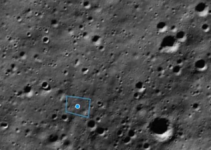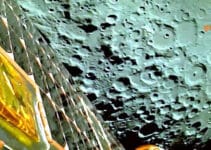As India awaits its historic lunar leap, WION spoke with former chief of Indian Space Research Organisation (ISRO) Dr K Sivan, to understand the specifics of the much-anticipated landing of Vikram lander of Chandrayaan-3 mission.
Four years ago, in September 2019, the predecessor of Chandrayaan-3 mission achieved partial success after its lander crash landed on lunar surface.
This time around, the partial success of Chandrayaan-2 mission has served as a template for the Indian Space Research Organisation to achieve complete success of the lunar mission that has kept more than a billion people waiting with a bated breath.
After not making it in the maiden attempt (Chandrayaan-2 in 2019), India will make making its second attempt at Lunar soft-landing on Wednesday (Aug 23).
“If you bring the craft’s velocity to zero before it touches down on the moon, then it will fall down like a football. If the velocity is higher than the ideal landing velocity of 2metres/second, then it will crash land on the moon. It is crucial to reduce the craft’s velocity from nearly 2kilometers/second to 1meter/second, in a very meticulously calculated manner” Sivan explained to WION.
He was responding to a query on what makes Lunar soft-landing so sophisticated, that only three nations have done it so far.
If all performance parameters of the Vikram Lunar lander are found to be ideal, ISRO’s Mission Operations Complex (MOX) at the ISRO Telemetry, Tracking and Command Network (ISTRAC) in Bengaluru, would issue the landing command.
The landing process, also known as powered descent is meant to commence at 5:45pm Indian Standard Time (IST) on Wednesday. The lander is expected to touch down on the surface of the moon at 6:04 PM IST.
In September 2019, it was barely 2.1km above the lunar surface that ISRO lost contact with its then lander. Soon, they had learnt that the craft crash landed on the moon and the landing component of the mission was lost, thereby only leaving them with a Lunar orbiter.
The orbiter, which continues to circle the moon even today, has offered a significant amount of data and mapping, that would help Chandrayaan-3 in performing what its predecessor lander could not.
Chandrayaan-3 Mission:
‘Welcome, buddy!’
Ch-2 orbiter formally welcomed Ch-3 LM.
Two-way communication between the two is established.
MOX has now more routes to reach the LM.
Update: Live telecast of Landing event begins at 17:20 Hrs. IST.#Chandrayaan_3 #Ch3
— ISRO (@isro) August 21, 2023
ISRO’s lander craft is to land near the Lunar south pole or 70degree latitude, an unexplored region with potential reserves of water ice, that could prove to be of significant use when astronauts look to settle on the moon or establish a colony.
Water ice could serve as rocket fuel (when split into hydrogen and oxygen) and offers great hope for a prospective outpost on the moon.
“Lunar terrain is not smooth, at the south polar region there is very harsh terrain, it has sandy, rocky features and even craters, boulders,” Dr. Sivan said.
Referring to the potential gains from mastering Lunar soft-landing technology, he said that it offered the basic capability to land on other celestial bodies. Of course, each celestial body has its own features and challenges for landing, but lunar-landing would be a great start for India.
“For example, for Mars landing we need to factor in the existence of Martian atmosphere to slow down the craft. Whereas, there is negligible impact of atmosphere (slowing the craft down) while doing a lunar landing. More sophisticated additions will have to be done to the Lunar landing technology, for India to be able to land on other planets and celestial bodies,” he concluded.
recommended stories
recommended stories
WATCH WION LIVE HERE
You can now write for wionews.com and be a part of the community. Share your stories and opinions with us here.

